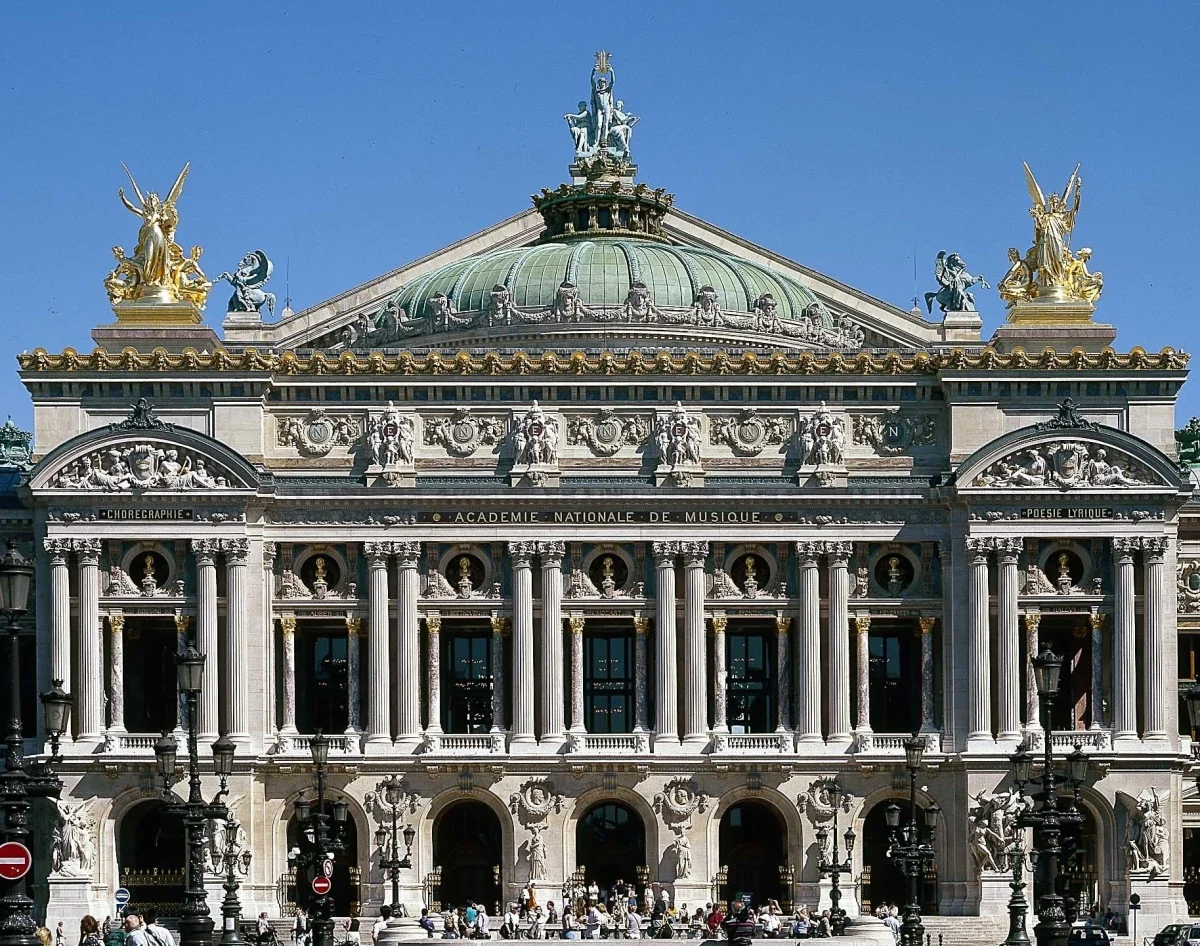
Opéra Garnier, designed by architect Charles Garnier and completed in 1875, features a lavish auditorium and several public spaces, including the grand foyer, elegant lounges, rehearsal studios and a museum-library. It was commissioned by the Emperor Napoleon III, and for over a century, it served as the main venue for the Paris Opera and the Paris Opera Ballet. Since the opening of the Opera Bastille in 1989, the Palais Garnier has been used primarily for ballet performances.
Style
The Opéra Garnier was built in the richly decorative “Napoleon III” style, known for its eclectic blend of historical influences. Architect Charles Garnier combined elements from Baroque, Renaissance, and classical architecture with modern techniques and materials like iron framing. Every surface, inside and out, was richly adorned with varieties of marble and stone, porphyry, and gilded bronze. The façade alone featured 17 types of materials, including colorful marbles and intricate statuary inspired by Greek mythology. The effect of the building is dramatic and truly captures the spirit of the theatre.
Exterior and the Façade
The Opéra Garnier’s main façade showcases arcades, stone columns, and intricate sculpture work while overlooking the Place de l’Opéra. Its decoration involved 14 painters, mosaicists, and 73 sculptors. At the highest points, there are two beautiful golden pieces, Harmony and Poetry, that elevate the entire building even more.

